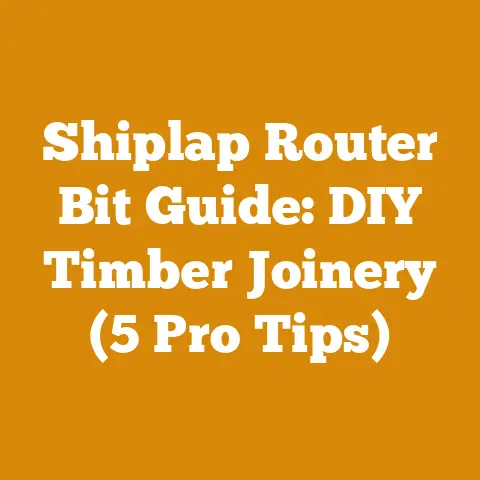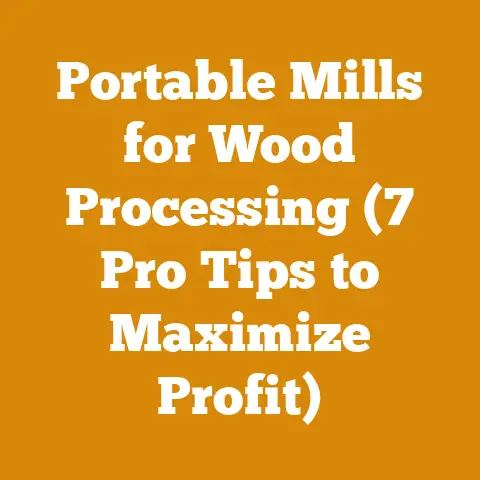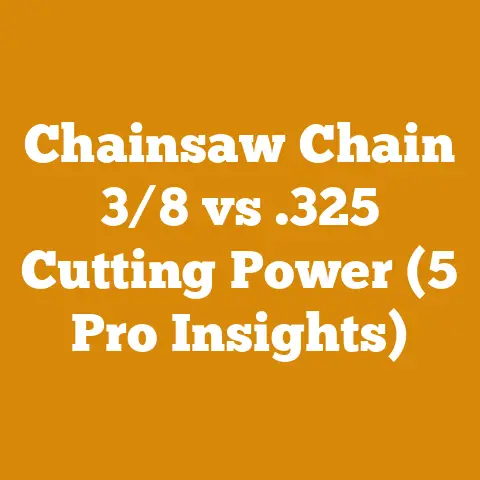Termite Eggs in Wood (5 Proven Wood Treatment Tips)
Alright, let’s dive into the fascinating and sometimes frustrating world of wood and its uninvited guests.
Termite Eggs in Wood: 5 Proven Wood Treatment Tips
There’s something deeply satisfying about working with wood, isn’t there? The smell of freshly sawn lumber, the feel of the grain under your hand, the transformation of a rough log into something beautiful and functional – whether it’s a rustic coffee table, a sturdy shed, or even a winter’s supply of cozy firewood. I’ve spent countless hours in my own workshop, covered in sawdust, battling splinters, and occasionally, more insidious problems. One of the most disheartening discoveries is finding unwelcome inhabitants in your precious wood: termite eggs.
I remember one particularly frustrating experience when I was building a small cabin in the woods. I had carefully selected and milled the logs myself, taking pride in the quality of the timber. Imagine my dismay when, halfway through the project, I discovered signs of termite infestation. It was a real punch to the gut, and it forced me to learn everything I could about termite eggs, wood treatment, and prevention.
Understanding the Enemy: Termite Eggs and Their Habitat
Before we get into treatment, it’s crucial to understand what we’re dealing with. Termite eggs are tiny – typically oval-shaped and pearly white, often smaller than a grain of rice. They’re usually found in clusters within the wood, hidden in galleries and tunnels created by the termites themselves.
Identifying Termite Infestation:
- Visible Damage: Look for hollowed-out wood, mud tubes on the surface, and frass (termite droppings). I once found a whole colony living inside the hollow leg of an old chair!
- Sound Test: Tap the wood. A hollow sound can indicate termite damage.
- Probing: Use a screwdriver or awl to probe the wood. If it easily penetrates, it might be infested.
- Swarmers: The presence of winged termites (swarmers) indoors is a strong sign of an infestation. These are the reproductive termites that leave the colony to start new ones.
Termite Species and Their Preferences:
Different termite species have different preferences. Subterranean termites, for example, live in the ground and build mud tubes to reach wood. Drywood termites, on the other hand, can live entirely within the wood, requiring no contact with the soil. Knowing which type you’re dealing with is crucial for choosing the right treatment.
Why Wood Treatment Matters: The Cost of Neglect
Ignoring a termite infestation can have devastating consequences. Termites can weaken the structural integrity of buildings, leading to costly repairs. They can also damage furniture, fences, and other wooden structures.
The Financial Impact:
- Repair Costs: Replacing damaged wood can be expensive. Framing lumber prices fluctuate, but on average, you can expect to pay between $3 to $8 per board foot, depending on the species and grade. I’ve seen prices even higher during periods of high demand or supply chain disruptions.
- Treatment Costs: Professional termite treatment can range from a few hundred dollars to several thousand, depending on the extent of the infestation and the chosen method.
- Property Value: Termite damage can significantly decrease the value of your property.
A Personal Anecdote:
A friend of mine ignored a small termite problem in his garage for too long. By the time he decided to address it, the damage was extensive, requiring him to replace several structural beams and walls. The total cost was over $10,000 – a painful lesson in the importance of early detection and treatment.
1. Borate Treatment: A Natural and Effective Solution
Borate-based wood preservatives are a popular and effective option for treating and preventing termite infestations. Borates are naturally occurring minerals that are toxic to termites but relatively safe for humans and pets when used correctly.
How it Works:
Borates penetrate the wood and create a barrier that termites cannot digest. When termites ingest borate-treated wood, it disrupts their digestive system, eventually leading to their death.
Application:
Borate treatments can be applied as a liquid spray or dust. For existing infestations, it’s often best to inject the borate solution directly into the termite galleries.
Cost Considerations:
- Materials: Borate-based wood preservatives typically cost between $20 and $50 per gallon. I usually buy it in concentrate form to save money, then dilute it according to the manufacturer’s instructions.
- Equipment: You’ll need a sprayer or injector, which can cost between $20 and $100, depending on the quality and features.
- Labor: If you hire a professional, expect to pay between $100 and $300 for a typical application, depending on the size of the area being treated.
Pros:
- Relatively safe for humans and pets.
- Effective against a wide range of wood-boring insects.
- Can be used as a preventative treatment.
- Penetrates deep into the wood.
Cons:
- Can be washed away by rain, so it’s not suitable for exterior applications unless the wood is sealed.
- May require multiple applications for severe infestations.
2. Heat Treatment: A Non-Chemical Approach
Heat treatment involves raising the temperature of the wood to a level that is lethal to termites. This method is effective for treating entire structures or individual pieces of furniture.
How it Works:
Termites cannot survive temperatures above 120°F (49°C) for extended periods. Heat treatment raises the temperature of the wood to this level, killing the termites and their eggs.
Application:
For whole-structure heat treatment, professionals use specialized equipment to heat the entire building. For smaller items, such as furniture, you can use a heat chamber or oven.
Cost Considerations:
- Professional Heat Treatment: Whole-structure heat treatment can cost between $1 and $3 per square foot. So, for a 1,500-square-foot house, you can expect to pay between $1,500 and $4,500. I had a friend who opted for this method when dealing with a particularly stubborn infestation in his historic home.
- DIY Heat Treatment: For smaller items, you can use a heat chamber or oven. The cost of building a DIY heat chamber can range from $100 to $500, depending on the size and materials.
Pros:
- Non-chemical and environmentally friendly.
- Effective against all stages of the termite life cycle.
- Can treat entire structures.
Cons:
- Can be expensive for whole-structure treatment.
- Requires specialized equipment.
- Can damage heat-sensitive materials.
3. Soil Treatment: Protecting Your Foundation
Soil treatment involves applying termiticides to the soil around your foundation to create a barrier that prevents termites from entering your home. This method is particularly effective against subterranean termites.
How it Works:
Termiticides create a chemical barrier in the soil that termites cannot penetrate. When termites attempt to cross the barrier, they are either killed or repelled.
Application:
Professionals typically use specialized equipment to inject termiticides into the soil around the foundation.
Cost Considerations:
- Professional Soil Treatment: Soil treatment can cost between $5 and $15 per linear foot. So, for a 100-foot perimeter, you can expect to pay between $500 and $1,500. This is a common method in areas with high termite activity.
- Termiticides: Termiticides typically cost between $50 and $150 per gallon.
Pros:
- Effective against subterranean termites.
- Provides long-term protection.
- Can be used as a preventative treatment.
Cons:
- Requires specialized equipment and training.
- Can be harmful to the environment if not applied properly.
- May need to be reapplied periodically.
4. Direct Chemical Treatment: Targeted Elimination
Direct chemical treatment involves applying termiticides directly to the termite colony or infested wood. This method is effective for treating localized infestations.
How it Works:
Termiticides kill termites on contact or through ingestion. They can also be transferred from termite to termite, spreading the poison throughout the colony.
Application:
Termiticides can be applied as a liquid spray, foam, or dust. For existing infestations, it’s often best to inject the termiticide directly into the termite galleries.
Cost Considerations:
- Termiticides: Termiticides typically cost between $20 and $100 per gallon.
- Equipment: You’ll need a sprayer or injector, which can cost between $20 and $100, depending on the quality and features.
- Labor: If you hire a professional, expect to pay between $100 and $300 for a typical application, depending on the size of the area being treated.
Pros:
- Effective against localized infestations.
- Can be used in conjunction with other treatment methods.
- Provides quick results.
Cons:
- Can be harmful to humans and pets if not used properly.
- May not eliminate the entire colony.
- Requires careful application.
5. Nematodes: Nature’s Tiny Warriors
Beneficial nematodes are microscopic worms that parasitize insects, including termites. They are a natural and environmentally friendly way to control termite populations.
How it Works:
Nematodes enter the termite’s body and release bacteria that kill the termite. They then reproduce inside the termite’s body, creating more nematodes to infect other termites.
Application:
Nematodes can be applied to the soil around your foundation or directly to infested wood.
Cost Considerations:
- Nematodes: Nematodes typically cost between $20 and $50 per million.
- Equipment: You’ll need a sprayer or watering can to apply the nematodes.
Pros:
- Natural and environmentally friendly.
- Safe for humans and pets.
- Can be used as a preventative treatment.
Cons:
- May not be as effective as chemical treatments for severe infestations.
- Requires moist soil conditions.
- Can be expensive for large areas.
Cost Breakdown: A Detailed Look at Treatment Expenses
Let’s break down the costs associated with each treatment method in more detail. This table provides a general overview, but prices can vary depending on your location, the severity of the infestation, and the specific products or services you choose.
| Treatment Method | Materials Cost | Equipment Cost | Labor Cost (Professional) | Total Cost (Approximate) |
|---|---|---|---|---|
| Borate Treatment | $20 – $50 per gallon | $20 – $100 | $100 – $300 | $140 – $450 |
| Heat Treatment | N/A | N/A | $1 – $3 per sq ft | $1,500 – $4,500 (for 1500 sq ft) |
| Soil Treatment | $50 – $150 per gallon | Specialized Equipment | $5 – $15 per linear ft | $550 – $1,650 (for 100 linear ft) |
| Direct Chemical Treatment | $20 – $100 per gallon | $20 – $100 | $100 – $300 | $140 – $500 |
| Nematodes | $20 – $50 per million | Sprayer/Watering Can | N/A (DIY) | $20 – $50 |
Important Considerations:
- Location: Prices can vary significantly depending on your location. Urban areas tend to have higher labor costs than rural areas.
- Infestation Severity: The more severe the infestation, the more materials and labor will be required.
- DIY vs. Professional: DIY treatments can save you money on labor costs, but they may not be as effective as professional treatments.
- Preventative Measures: Investing in preventative measures, such as regular inspections and proper wood storage, can save you money in the long run.
Budgeting for Wood Treatment: A Step-by-Step Guide
Creating a budget for wood treatment is essential for managing costs and ensuring that you can afford the necessary treatments. Here’s a step-by-step guide to help you create a realistic budget:
1. Assess the Situation:
- Identify the Problem: Determine the type of termite you’re dealing with and the extent of the infestation.
- Inspect the Damage: Assess the damage to your wood and estimate the cost of repairs.
- Get Multiple Quotes: Obtain quotes from several professional termite treatment companies.
2. Determine Your Treatment Options:
- Research Treatment Methods: Explore the different treatment methods available and choose the one that is best suited for your situation.
- Consider DIY Options: If you’re comfortable with DIY treatments, factor in the cost of materials and equipment.
- Weigh the Pros and Cons: Consider the pros and cons of each treatment method, including cost, effectiveness, and environmental impact.
3. Create a Detailed Budget:
- Materials: List all the materials you’ll need, including termiticides, sprayers, and protective gear.
- Equipment: Include the cost of any equipment you’ll need to purchase or rent.
- Labor: If you’re hiring a professional, include the cost of their services.
- Contingency Fund: Set aside a contingency fund to cover unexpected expenses. I always add at least 10% for the unexpected.
4. Prioritize and Allocate Funds:
- Prioritize Treatments: Focus on the most critical areas first, such as structural supports.
- Allocate Funds: Allocate your budget to each treatment method based on its priority and cost.
- Consider Financing Options: If you can’t afford to pay for the treatments upfront, explore financing options, such as loans or payment plans.
5. Track Your Expenses:
- Keep Records: Keep detailed records of all your expenses, including receipts and invoices.
- Monitor Your Budget: Regularly monitor your budget to ensure that you’re staying on track.
- Adjust as Needed: Be prepared to adjust your budget as needed, based on unexpected expenses or changes in the scope of the project.
Practical Tips for Cost Optimization
Here are some practical tips for optimizing the cost of wood treatment:
- Early Detection: The earlier you detect a termite infestation, the less damage they will cause, and the less expensive it will be to treat. Regular inspections are crucial. I make it a point to inspect my wood structures at least twice a year.
- DIY vs. Professional: DIY treatments can save you money on labor costs, but they may not be as effective as professional treatments. Consider your skills and experience before attempting DIY treatments.
- Compare Prices: Get quotes from multiple professional termite treatment companies to ensure that you’re getting the best price.
- Preventative Measures: Investing in preventative measures, such as regular inspections and proper wood storage, can save you money in the long run.
- Negotiate: Don’t be afraid to negotiate with professional termite treatment companies. They may be willing to offer discounts or payment plans.
- Consider Alternative Treatments: Explore alternative treatments, such as borate treatments or nematodes, which may be less expensive than traditional chemical treatments.
- Proper Wood Storage: Store wood properly to prevent termite infestations. Keep wood off the ground, away from moisture, and in a well-ventilated area.
- Remove Wood Debris: Remove wood debris, such as stumps and fallen branches, from around your property. These can attract termites.
- Maintain Gutters and Downspouts: Keep your gutters and downspouts clean and in good repair to prevent moisture from accumulating around your foundation.
- Seal Cracks and Openings: Seal cracks and openings in your foundation and around pipes to prevent termites from entering your home.
Case Studies: Real-World Examples of Cost Management
Let’s look at a couple of case studies to illustrate how these principles can be applied in real-world situations.
Case Study 1: A Homeowner with a Limited Budget
A homeowner discovered a small termite infestation in their shed. They had a limited budget and were concerned about the cost of professional treatment.
Solution:
The homeowner opted for a DIY borate treatment. They purchased borate-based wood preservative online and applied it to the infested wood themselves. They also took preventative measures, such as removing wood debris from around the shed and improving ventilation.
Cost:
- Borate-based wood preservative: $30
- Sprayer: $20
- Total: $50
Outcome:
The borate treatment was effective in eliminating the termite infestation. The homeowner saved money by doing the treatment themselves and taking preventative measures.
Case Study 2: A Business Owner with a Large Infestation
A business owner discovered a large termite infestation in their commercial building. They needed to treat the infestation quickly and effectively to prevent further damage.
Solution:
The business owner hired a professional termite treatment company to perform a whole-structure heat treatment. This method was effective in eliminating the entire termite colony.
Cost:
- Whole-structure heat treatment: $3,000
Outcome:
The heat treatment was successful in eliminating the termite infestation. The business owner avoided further damage to their building and protected their investment.
Estimating Drying Time Based on Moisture Content
One crucial aspect of dealing with wood, especially after treatment, is ensuring it’s properly dried. Moisture content plays a significant role in preventing future infestations and maintaining the wood’s integrity. Here’s a simplified way to estimate drying time:
Factors Affecting Drying Time:
- Wood Species: Different wood species have different drying rates. Softwoods like pine dry faster than hardwoods like oak.
- Thickness: Thicker pieces of wood take longer to dry.
- Initial Moisture Content: The higher the initial moisture content, the longer it will take to dry.
- Environmental Conditions: Temperature, humidity, and airflow all affect drying time.
Estimating Drying Time:
While a precise calculation requires specialized equipment and knowledge, you can use a rule of thumb:
- Air Drying: In typical air-drying conditions (60-80°F and 50-70% humidity), wood will dry about 1 inch of thickness per year. So, a 4-inch thick piece of wood could take about 4 years to dry completely.
- Kiln Drying: Kiln drying significantly reduces drying time. Depending on the species and thickness, it can take anywhere from a few days to a few weeks.
Formula for Estimating Drying Time (Simplified):
Drying Time (Years) = Thickness (Inches) x Correction Factor
- Correction Factor: This factor accounts for species and environmental conditions. For softwoods in moderate climates, use 0.8. For hardwoods in humid climates, use 1.2.
Example:
Let’s say you have a 2-inch thick piece of oak in a humid climate.
Drying Time (Years) = 2 inches x 1.2 = 2.4 years
Important Note: This is a rough estimate. Use a moisture meter to accurately measure the moisture content of the wood. The ideal moisture content for most woodworking projects is between 6% and 8%.
Here are some of the common challenges:
- Limited Resources: Small-scale operators often have limited financial resources, making it difficult to afford expensive termite treatments.
- Lack of Knowledge: They may not have the knowledge or expertise to identify termite infestations or choose the right treatment methods.
- Equipment Costs: Investing in specialized equipment, such as sprayers and injectors, can be a significant expense.
- Labor Costs: Hiring labor to apply termite treatments can be costly, especially for small-scale operators.
- Environmental Concerns: They may be concerned about the environmental impact of traditional chemical treatments.
- Regulatory Compliance: They may need to comply with regulations regarding the use of termiticides.
Solutions for Small-Scale Operators:
- Focus on Prevention: Emphasize preventative measures, such as proper wood storage and regular inspections.
- DIY Treatments: Consider DIY treatments, such as borate treatments or nematodes, which are less expensive than traditional chemical treatments.
- Collaborate with Others: Collaborate with other small-scale operators to share equipment and knowledge.
- Seek Government Assistance: Explore government assistance programs that provide funding or training for termite prevention and treatment.
- Use Sustainable Practices: Adopt sustainable logging and firewood harvesting practices to minimize the risk of termite infestations.
Conclusion: Protecting Your Wood and Your Investment
Termite eggs in wood are a serious problem that can lead to costly damage. By understanding the enemy, implementing preventative measures, and choosing the right treatment methods, you can protect your wood and your investment. Remember, early detection is key, and a proactive approach is always the best strategy.






